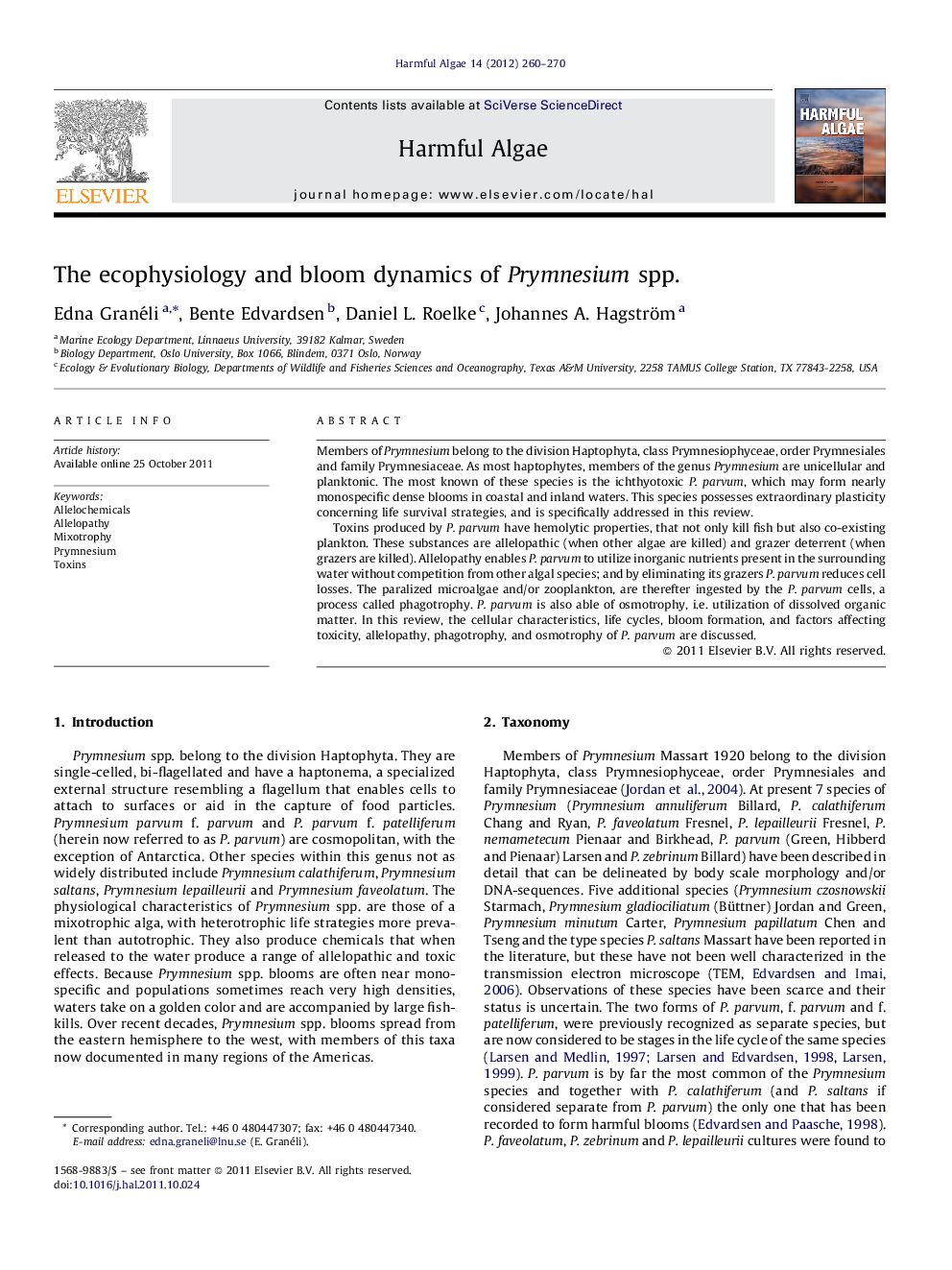| کد مقاله | کد نشریه | سال انتشار | مقاله انگلیسی | نسخه تمام متن |
|---|---|---|---|---|
| 4545641 | 1626956 | 2012 | 11 صفحه PDF | دانلود رایگان |

Members of Prymnesium belong to the division Haptophyta, class Prymnesiophyceae, order Prymnesiales and family Prymnesiaceae. As most haptophytes, members of the genus Prymnesium are unicellular and planktonic. The most known of these species is the ichthyotoxic P. parvum, which may form nearly monospecific dense blooms in coastal and inland waters. This species possesses extraordinary plasticity concerning life survival strategies, and is specifically addressed in this review.Toxins produced by P. parvum have hemolytic properties, that not only kill fish but also co-existing plankton. These substances are allelopathic (when other algae are killed) and grazer deterrent (when grazers are killed). Allelopathy enables P. parvum to utilize inorganic nutrients present in the surrounding water without competition from other algal species; and by eliminating its grazers P. parvum reduces cell losses. The paralized microalgae and/or zooplankton, are therefter ingested by the P. parvum cells, a process called phagotrophy. P. parvum is also able of osmotrophy, i.e. utilization of dissolved organic matter. In this review, the cellular characteristics, life cycles, bloom formation, and factors affecting toxicity, allelopathy, phagotrophy, and osmotrophy of P. parvum are discussed.
Journal: Harmful Algae - Volume 14, February 2012, Pages 260–270